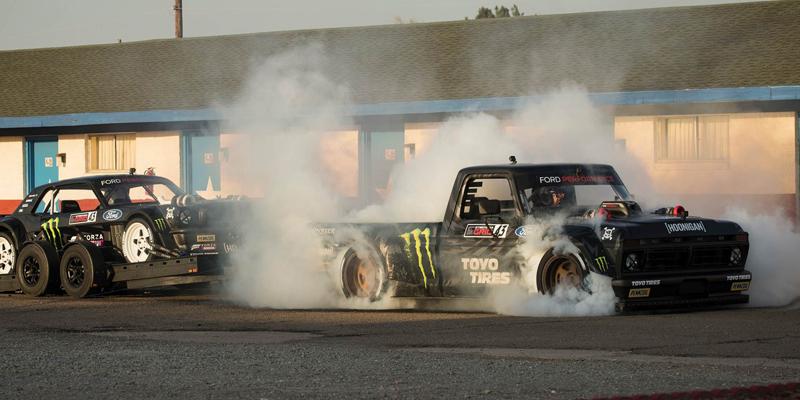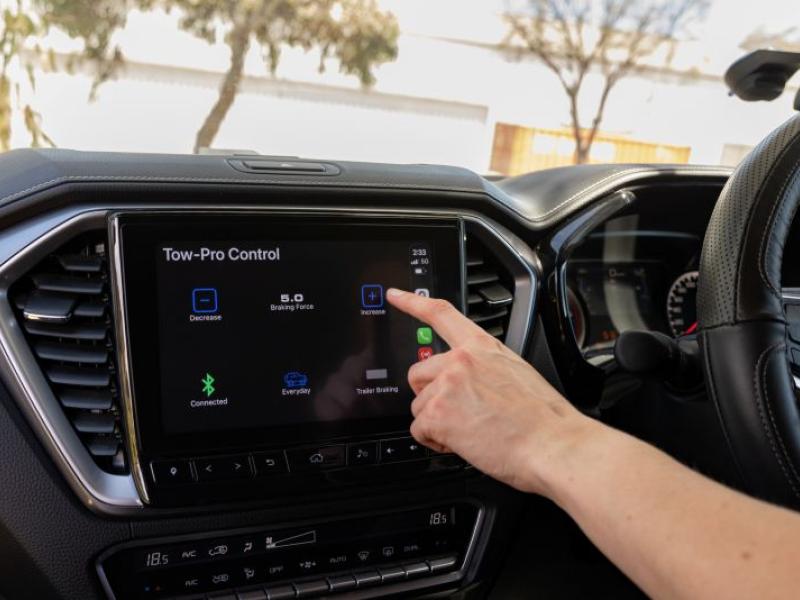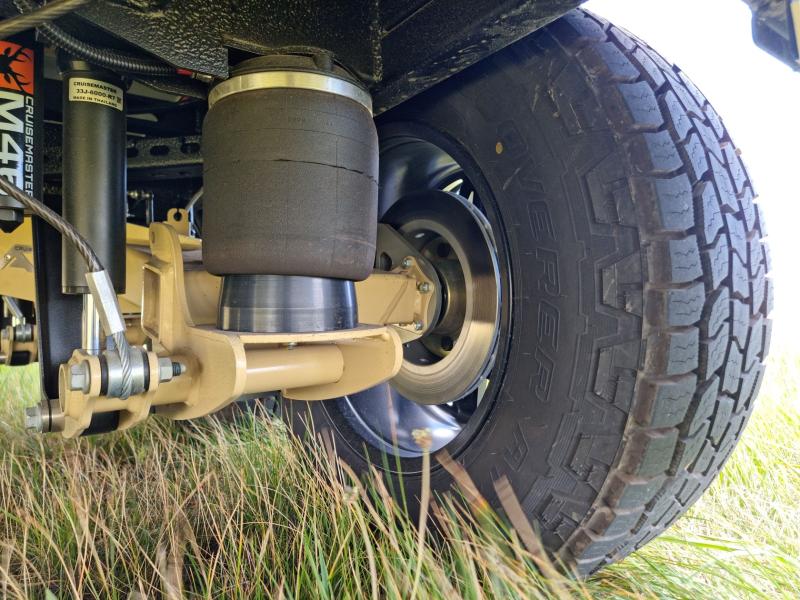By Mark Baker
Modern vehicles have all sorts of electronic aids to support the driver’s uncanny and innate skills, making towing safer now that ever.
But there are pitfalls aplenty for the unwary, and sometimes the very systems that work to make towing safer can lull a driver into a false sense of security – or even infallibility. Here are a few tips for those about to tow.
Tip 1:
For safe towing, match the tow vehicle to its purpose. Front wheel drive cars can be less than perfect for towing. An all-wheel-drive ‘soft-roader’ can do the job, but for strength, stability and reliability there is no going past an old school chassis-based four-wheel-drive.
Not only does a 4WD give access to higher towing rating and even towing ‘packages’ or kits that further extend the safety envelope, they often have other features that make them ideal for towing.
For example, big four-wheel-drives generally have a low range transfer case, making them ideal for edging a trailer into and through tight spaces. Up to 90 per cent of all passenger vehicles used for towing these days are four-wheel-drives of various descriptions.
Tip 2
If buying a vehicle for towing, buy wide and long. Track – wheel width – makes for stable towing, reducing the tendency of a big wide trailer to push the tow vehicle in corners which can lead to fishtailing. Length – specifically wheelbase – is likewise important, as it helps damp out yawing caused by emergency braking or steering inputs and even side wind gusts.
Then there are the ‘kneeling’ trailer designs pioneered by Futura at Albany, which do away with the need for ramps when loading or unloading low-slung vehicles. These are gaining a huge following among club racers at classic and modern race meets.
Ready to tow?
Preparation to tow should focus on the vehicle’s condition, the trailer’s condition and on the drivetrain.
A manual gearbox remains the best way to control a towing rig. Engine braking available in a manual tow vehicle can never be matched by an auto, and manuals deal better with heat.
The Hill Descent Control technology found increasingly on SUVs and double-cab utes is a boon. It uses the ABS pickups on a vehicle to sense wheel speeds and axle speeds, acting like ABS to slow a vehicle on slippery downhills.
Some tow vehicles also feature Trailer Sway Control, a little like stability control but specifically targeting fishtailing moments.
The tail of the fish
Heading north out of Taihape last month, there was a horrible sight. Traffic banked up for a couple of km, the red and blues flashing lights up ahead, then eventually we crept past the crash site. Up on a bank about two metres higher than the road, an old school classic: a Mk4 Cortina, squashed flat like a jandal. A little further on, the trailer that had carried the Cortina, pitched into the ditch like a Tonka toy, one wheel lost and the drawbar bent up at a strange angle toward the sky. Facing back up the road was the tow vehicle, a late model double-cab four wheel drive. Front end all smashed in.
A series of lurid black tyre marks headed away up the lanes, telling the story of the wild fishtailing ride that brought the vehicles to rest here. Long curves of black, one way and the other. The ambulance had already left the scene, leaving us to hope for the best for those involved.
A fishtail is one of the most frightening things that can happen while towing and it has a range of possible causes, mostly preventable. A wind-gust is the least predictable – so watch for sudden breaks in hillsides or the end of a stretch of buildings, and watch roadside trees to see how strong or gusty the wind is.
Changing road surface – mid-corner grip or a step in the road can set the trailer wagging. Learn, like a motocross rider, to predict what is coming next and drive defensively, thinking about “what I would do if…” Watch for damp areas, gravel buildup, even melted tar in summer.
Loading is critical. Make sure the drawbar has enough – but not too much – weight on it. Stack your trailer so around 10 percent of the total weight pushes down on the tow ball. Put the heaviest items slightly forward of the axle, to reduce the tendency to sway.
Driver behavior is the most common starter of a fishtail. Avoid sudden hard braking or sharp steering inputs. Make everything smooth and gradual. To do that, you need to leave yourself extra ‘survival’ space from the car in front. Opportunist motorists will constantly overtake you and dive into that gap, but towing is never a race – just keep making that space.
Legals:
- The speed limit for a light vehicle towing a trailer on the open road is 90 km/h. The first time you tow that will seem like plenty!
- Trailers, like motor vehicles, must have an up to date registration and warrant of fitness.
- There must be a safety chain bolted or welded to the trailer. A shackle can only be used to link the trailer to the tow vehicle.
- Brakes are required for any trailer that can carry a load that adds up to 2000 kg (trailer and load).
- On a full driver’s licence, the limit for the full combination of tow vehicle, trailer and the load of both vehicles is 6000kg.
- If you are towing another vehicle without a rigid towing system, e.g. recovering a breakdown with a rope or a strop, the maximum allowable speed is 50km/h.
https://www.consumer.org.nz/articles/towing-rules#article-wheels
https://www.nzta.govt.nz/resources/roadcode/about-driving/towing/
To read the full story in the April 2019 issue of NZ4WD go to Zinio.com (March 15) or purchase your own hard copy at the Adrenalin store.






